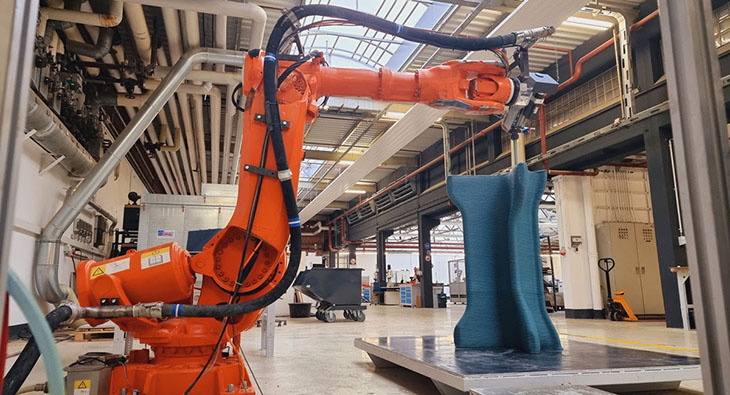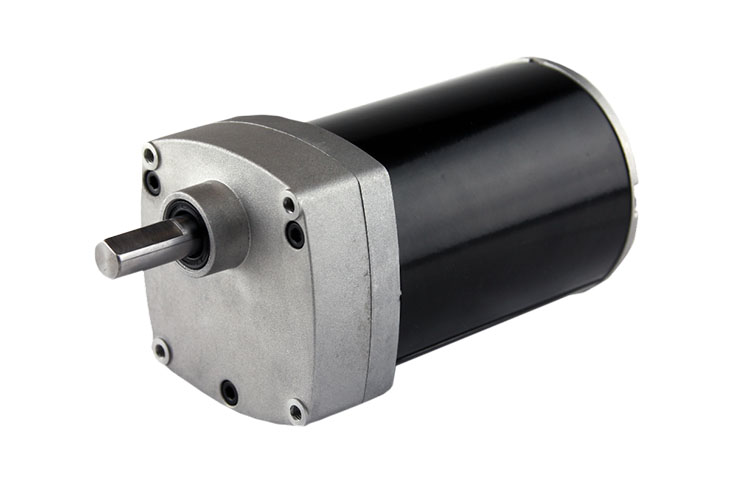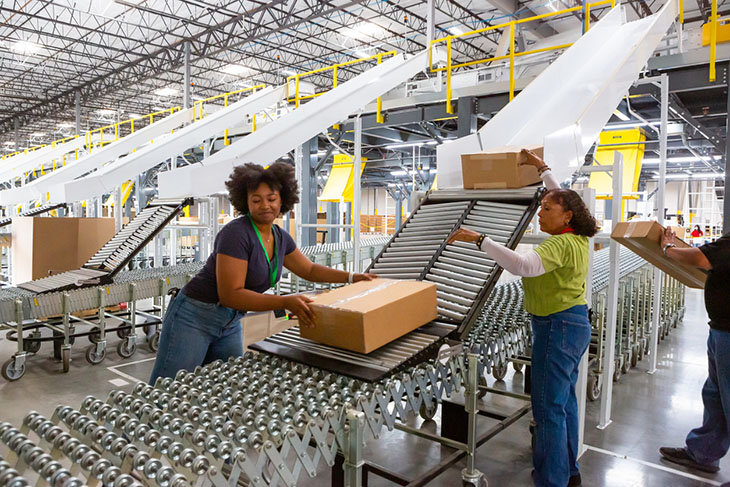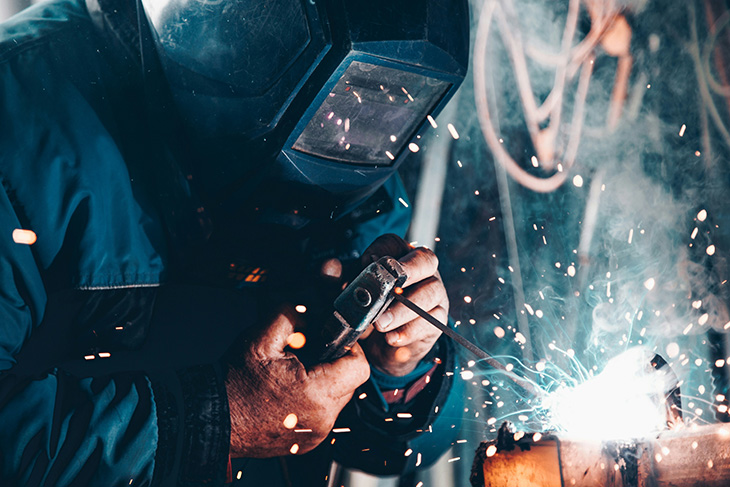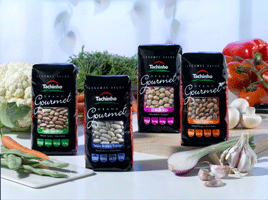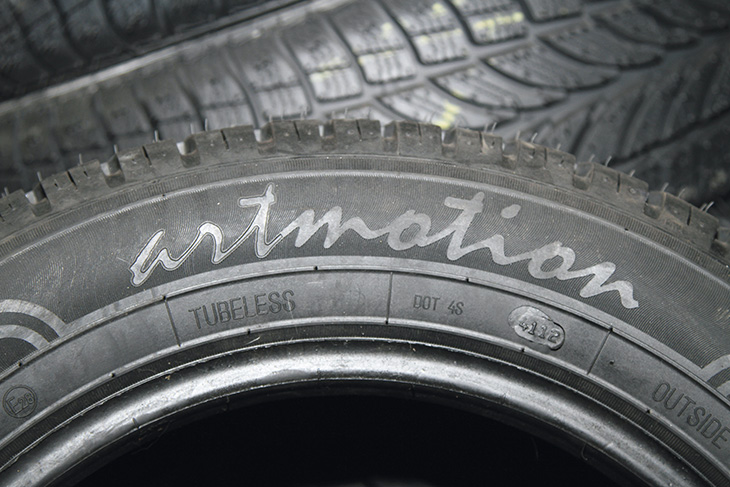The 3D printer “Goliath” prints large-format urban furniture and other objects from any type of granulate. An additional future innovation step is the printing process under water.
The “Goliath” manufacturing system, newly developed by the German startup Teu2tec GmbH, enables fast 3D printing of large-format objects from any type of granules using the paste extrusion modelling process (PEM). The system uses classic two-component polyurethane binders with fast curing times and granules with grain sizes up to 2,00 mm for this purpose. Due to the fast curing of the material (< 10 s), this method ensures both economical production and almost unlimited design freedom. By adapting the binders and materials used, the product properties can also be flexibly adjusted. All products to be manufactured can thus be made to cure elastically or firmly.
Printing method
The special design of the printing head enables the printing of highly viscous pastes. “Due to the very short pot life of less than 10 seconds, we can currently work here with printing speeds of up to 300 mm/s, with a mass flow of up to 100 g/s. That, already, is very impressive!” explains Jens Mikus, development engineer at Teu2tec.
The layer height can be adjusted from 3 mm to 12 mm, which not only enables fast printing processes, but also, due to the low layer height, optically complex components can be realized. At 2200 x 2200 x 2000 mm, the volume is large enough to be used, for example, to design furniture or complete playground equipment for urban development.
Discontinuous printing
In an initial test series, the Teu2tec team has already succeeded in setting down and repositioning the print head during the active printing process. With the process technology used, an interruption of the extrusion during the additive process is realized and repositioning is made possible without further printing paste leaking from the nozzle.
Underwater printing process
The first printing tests “under water” have been completed since the beginning of 2022. It is already becoming clear that the process, with appropriate binder systems, enables the printing of components under water. In this way, the field of application is significantly expanded and classifies this printing process as a highly flexible and unique manufacturing process.
The Teu2tec team is currently looking for partners to further develop the technology, to pilot the production process and for investors.
More information:
You can find more information about the 3D printing PEM process at https://teu2tec.de/download/Teu2tec-3D-PEM-Printing.pdf









